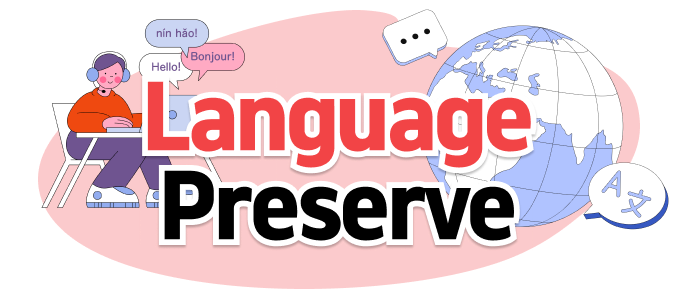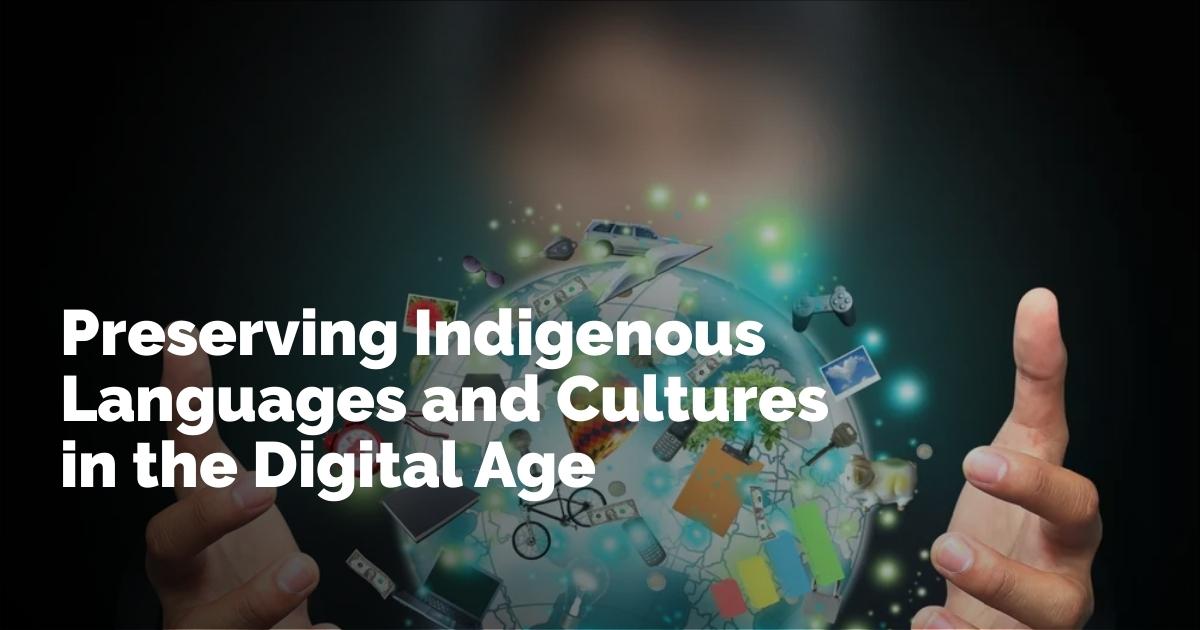The Disappearing Voices: A Global Effort to Preserve Indigenous Languages
The rapid extinction of indigenous languages is a pressing issue that's been largely overlooked in today's fast-paced world. As highlighted by the poignant observation that "every two weeks, the world loses an indigenous language," we are not merely losing words but entire histories and identities. This reality urges us to examine the factors behind this disappearance and explore how technology could be the savior of these vanishing voices.
Understanding the Global Crisis: The Extinction of Indigenous Languages
To comprehend the severity of the global crisis regarding indigenous languages, consider the alarming statistics from UNESCO. About 40% of the world’s 6,700 languages are endangered, and numerous have already vanished in recent decades. The disappearance of these languages results from communities shifting to dominant languages, motivated by economic opportunities, urban migration, and the influence of modern educational systems. Factors like colonization and cultural marginalization have further exacerbated this trend, causing a disconnect between younger generations and their ancestral tongues.
The loss of indigenous languages transcends mere words; it encompasses the loss of unique ecological knowledge, oral histories, and cultural identities. Each vanished language signifies a broader cultural erosion detrimental to humanity's diversity and wisdom.
The Role of Technology as a Preserver and Reviver
In this digital era, technology is emerging as a vital tool in preserving and reviving these endangered languages. Around the globe, innovative applications of technology are breathing life back into traditional languages and fostering cultural pride.
New Zealand’s Te Reo Māori Movement
New Zealand presents a shining example of how digital tools can revitalize a language on the brink of extinction. The rejuvenation of Te Reo Māori, the indigenous language, has been significantly aided by mobile apps like Kupu, which offers instant English-to-Te Reo translations. These tools, along with digital dictionaries, podcasts, and online lessons, have created an immersive learning atmosphere that makes the language accessible and appealing to younger generations.
Canada’s Inuit and First Nations Initiatives
In Canada, social media platforms have become instrumental in teaching indigenous languages. YouTube and TikTok host stories, traditions, and artworks shared in native tongues, reaching a global audience and reinforcing cultural identity among younger Inuit generations. Virtual storytelling and cultural content shared online have rekindled pride and connection to ancestral roots.
Revival Efforts in South America: The Quechua Example
In South America, the Quechua language spoken in Peru has capitalized on technology to bolster its presence. The inclusion of Quechua in Google Translate highlights its digital recognition, offering it a platform to thrive. Simultaneously, podcasts, WhatsApp groups, and radio programs are educating urban youth, merging traditional culture with modern technological mediums.
These examples showcase that with judicious use, technology can rescue languages from extinction and ignite interest in cultural heritage.
India: A Nation Rich in Linguistic Heritage
India's linguistic diversity is unparalleled, with over 700 indigenous languages. However, many dialects face extinction, particularly in tribal and rural communities. Various initiatives at both government and grassroots levels are addressing this crisis:
The National Digital Tribal Language Archive
The Ministry of Tribal Affairs in India has embarked on initiatives to document and conserve tribal languages. Through digital archives, interactive tools, and projects like the 'Support to TRIs scheme,' the ministry is working on bilingual dictionaries, literature, and folklore documentation to protect these endangered languages.
The Konyak Language Project
In Nagaland, efforts like the development of apps and digital books are being directed towards teaching children the Konyak dialect. Such initiatives are crucial in protecting languages against the generational loss.
Additionally, in regions like Kashmir, the revival of scripts such as the ancient Sharda is significant, symbolizing cultural pride and identity.
Education as a Pathway to linguistic Preservation
Integrating indigenous languages within formal education systems is vital for their preservation. New Zealand's success in embedding Te Reo Māori in the school curriculum is a model to emulate, having led to widespread language adoption. India's National Education Policy (NEP) 2020 likewise emphasizes the importance of teaching in one's mother tongue.
Yet, challenges remain in creating engaging, scalable educational solutions. Technology fills this gap through e-learning platforms, apps, and interactive content that make learning indigenous languages appealing to the youth.
Addressing Challenges: Bridging Generational and Digital Divides
While significant strides have been made, the path to language revival remains fraught with challenges:
Digital Infrastructure Gaps
Many tribal and remote regions still lack internet access and modern devices, restricting the reach and effectiveness of digital interventions.
Generational Disconnect
Elderly speakers, fluent in indigenous languages, may struggle with digital integration. Meanwhile, younger generations lean towards more globally dominant languages.
Economic Pressures
Communities often view global languages as gateways to economic prosperity, abandoning their native tongues in pursuit of opportunity.
Yet, as observed by language revivalists, "Technology can document and teach a language, but its survival lies in people embracing it in daily life."
A Vision for Kashmir’s Cultural Resurgence
Witnessing firsthand the transformative power of digital platforms, I envision regions like Kashmir setting examples in leveraging technology for cultural preservation. Training local youths in digital storytelling, filmmaking, and app development can bridge the gap between tradition and innovation. Platforms dedicated to Kashmiri handicrafts, folk literature, and regional scripts could help open global avenues while preserving the vibrant heritage of the valley.
A Global Movement, Grounded in Local Identity
In our digitally connected world, the revival of indigenous languages and cultures highlights the resilience of communities determined to preserve their identity. When paired with education, policy, and local efforts, technology presents a powerful solution to a crisis threatening cultural diversity. Celebrating the successes of languages like Te Reo Māori, Quechua, and India’s tribal dialects demonstrates that the survival of these languages lies in harmonizing tradition with innovation.
In Kashmir, where cultural identity holds deep significance, safeguarding linguistic traditions and cultural heritage must remain a priority. By marrying technology with longstanding traditions, we can ensure that no story, song, or piece of history is forgotten. These efforts remind us that language is not just a method of communication; it is a vessel for culture, identity, and continuity.
출처 : Original Source

